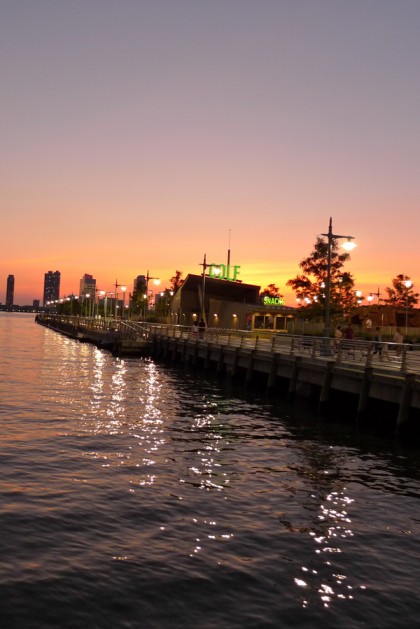Open Letter: The Hudson River Park Tax
To: Public officials, community boards, and members of the media
From:
Sarah Bartlett, 27A Harrison
Nicole Vianna, 16 Hudson, Treasurer, One Hudson Park, Inc.
Amy Johannes, 34 Laight
Arvin Chin, 29 Harrison
Mary Corliss, 55 Hudson
Kathy Capsouto, 319 Greenwich
Sami Capsouto, 319 Greenwich
Jacques Capsouto, 457 Washington
Barrie Mandel, 25 Harrison
Harvey Schneier, 25 Harrison
Wendy Chapman, 311 Greenwich
Westley Chapman, 311 Greenwich
Barbara Marcus, 55 Hudson
Robert Bouton, 16 Hudson, Secretary, One Hudson Park, Inc.
Noel Kirnon, 165 Duane, Board President, Duane Park Lofts
Lynn Ellsworth, 165 Duane, Chair, Tribeca Trust
Mark Stern, 430 Greenwich
Robin Holland, 430 Greenwich
Michael Hyun 137 Duane
Clare McAdam, 148 Chambers
Susan Swan, 105 Hudson, Board member, Fine Arts Housing
Karen Barth, 153 Chambers
David Puritz, 39 Harrison
Jennifer Puritz, 39 Harrison
Re: The Friends of Hudson River Park’s proposed Neighborhood Improvement District
 As you may be aware, Hudson River Park receives no city or state funding for maintenance of the park and its budget has been running a deficit. As a result, an organization called Friends of Hudson River Park has proposed that a Neighborhood Improvement District (NID) be created to collect up to $10 million annually to fill the budget gap. This NID, which is the equivalent of a Business Improvement District (BID), would impose a legally enforceable annual assessment (a tax by any other name) on property owners living within several blocks of the park between Murray Street and 59th Street. The Friends group has sought support for its proposal from the three Community Boards that would be affected by this NID and is planning to submit a formal legislative proposal to the City Planning Commission and City Council as early as this spring.
As you may be aware, Hudson River Park receives no city or state funding for maintenance of the park and its budget has been running a deficit. As a result, an organization called Friends of Hudson River Park has proposed that a Neighborhood Improvement District (NID) be created to collect up to $10 million annually to fill the budget gap. This NID, which is the equivalent of a Business Improvement District (BID), would impose a legally enforceable annual assessment (a tax by any other name) on property owners living within several blocks of the park between Murray Street and 59th Street. The Friends group has sought support for its proposal from the three Community Boards that would be affected by this NID and is planning to submit a formal legislative proposal to the City Planning Commission and City Council as early as this spring.
The abovesigned are owners of property in the proposed Hudson River Park Neighborhood Improvement District who are being asked to pay the proposed annual assessment.
We oppose the creation of the NID for the following reasons:
- It is unfair to ask 8,000 tax-lot owners to bear responsibility for about a third of the park’s annual operating budget. A recent Friends survey found that 55 percent of those who use the park are not from the surrounding area and 48 percent do not even come from Manhattan. An entrance fee for park users would be more equitable but would rightly be considered abhorrent, so why is a tax on a select group of residents who may never use the park but happen to live in an arbitrarily determined “neighborhood” deemed more acceptable?
- The information provided in the Friends’ literature was misleading. The examples of the amount a property owner would be assessed were based on a property’s net square footage, not the gross number on which the actual assessment would be calculated. In the case of one co-op building in Tribeca, for instance, the annual assessment based on its gross square footage would be 61 percent higher than what a co-op owner in that building would calculate based on the Friends’ literature.
- The proposed tax will be levied on people who cannot vote against it, violating a core principle of this nation that there shall not be taxation without representation. Specifically, individual homeowners and condo owners each get one vote, but owners of co-op apartments only get one vote for their entire building. Similarly, landlords can pass this assessment onto renters of commercial and residential property the next time a lease is written, but renters’ votes are not counted in determining whether there is broad support for this proposal. (For City Council to pass this, at least 50 percent of property owners must agree to it.)
- According to the Friends literature, as much as 40 percent of the money that would be raised by this assessment will not go to supporting the park. Up to $600,000 a year, for instance, will be earmarked for unspecified community groups that now have a financial incentive to support this proposal.
- The timing of the proposed NID assessment is terrible. The NID will take $8 million to $10 million a year out of the pockets of property owners near the Hudson River, many of whom have suffered serious financial hardship as a result of Hurricane Sandy.
- The community is not well informed about this proposal. Although the Friends group likes to point out that it has held seven public meetings, they were poorly advertised and attendance was very limited. Moreover, many co-op owners in Community Board #1 said they never received any mailings from Friends prior to the two public meetings that were held in their district.
- Community Board #1 passed a resolution in favor of this proposal before the second public meeting in the district had even occurred. At that second meeting, dozens of local residents expressed strong opposition to this proposal.
- The NID (or BID) structure has never before been imposed on a NYC district where the residential property owners outnumber business property owners by six to one. If this NID is approved, it will instantly become the second-largest improvement district in the city, and it will be saddled with unique governance challenges. The governing board will have to reflect the reality that the proposed district is not, in fact, a neighborhood, but includes parts of three Community Boards, three City Council districts, two State Senate districts and three State Assembly districts. Until more details are developed about how the governance structure can adequately represent all the different real estate classes and disparate neighborhoods, this unwieldy proposal should not go forward.
- The Friends of Hudson River Park say they have spent seven years developing this proposal. Yet they did not hire formal fundraising staff until last year. They insist the NID is the only way to move forward, but before they impose a new tax in perpetuity on our neighbors, other avenues, including a more robust voluntary membership program, should be more fully explored.
A few neighborhood residents have met and posted the following online petition: signon.org/sign/say-no-
If you are interested in contacting us, we can be reached at nohrpnid@gmail.com. And do plan on making your voice heard at the next full meeting of Community Board 1, Tuesday night at BMCC Fiterman Hall (13th floor).














Haven’t owners’ property values increased in the last five years as a result of the park??
The “Friends” of the Hudson River Park are no friend of Tribeca/West Side residents. They give me the Robert Moses creeps disguised in a “river park-way.” Since Michael Novogratz has extensive experience in paying for scaffolding, maybe he could “wrestle” the cost of scaffolding out of his “a$$” to protect the decaying parts of the HRP until the HRP can figure out how to cover their costs, per their original agreement with the City, without taxing the OVERtaxed residents of NYC. CB1 is and has been a joke. Oops, yes, the FofHRP is also a joke because any toddler attending PS 234 could come up with the idea of a NID, because it’s the EASIEST “solution.” You’d think the FofHRP could do better than that, but obviously not. Did I already mention CB1 is a joke? Well, it’s true, they are. Side note – I’d like to have central A/C in my apartment, but I can’t afford it right now, so if anyone wants to contribute to a Friends of Smithers’s New Central A/C Unit, please let EriK! know ASAP. Thank you, the one friend of MIchael Novogratz. Or maybe the FofHRP could come up with their own Sequestor option? Or not. Idiots!
Marc,
The proposition that the Park has raised property values is based on a commissioned study, so that itself has raises questions, but let’s say it has. The study refers to areas within 2 blocks of the Park in Greenwich Village, areas where there was a lot more large scale residential development during the study time than there was in Tribeca. Also, In Tribeca the blocks closes to the Park suffered damage from Superstorm Sandy and thus are now less valuable in particular and likely less attractive to buyers going forward. The Park’s effect on properties in the eastern half of the NID zone is even more tenuous. For example, it is much more likely that the West Broadway and Hudson Street corridors from Chambers Street to Duane Street increased in value due to the renovation of Duane Park, the greening of Bogardus Triangle, the creation of Bogardus Plaza and the transition of the Cosmopolitan Hotel from an SRO to a tourist hotel. Note also that the improvements to the park spaces in that area were funded VOLUNTARILY by nearby homeowners, not through a legally enforceable asssesment, specialized tax or user fee on them alone.
Further, using prior increases in property value to argue that property owners have a duty to “give back” a portion of their gains in the form of the NID assessment sounds great, but is really fairly unsupportable. The most obvious counter-example is owners who have recently moved into the zone and thus paid the increased price for their home. They have no gains to “give back” but will still be charged the assessment. In addition, increases in property values are also already partially given back by owners via increases in their annaul New York City property taxes and at the time of sale to both New York City and State via the Real Property Transfer Tax, the Real Estate Transfer Tax and “Mansion” Tax, and income taxes levied on capital gains. How can it be fair to add an additional charge just to nearby property owners to support a Park used by hundreds of thousands of other New Yorkers and visitors each year?
Someone care to explain to me why an ‘entrance fee for park users’ would be so “abhorrent”?